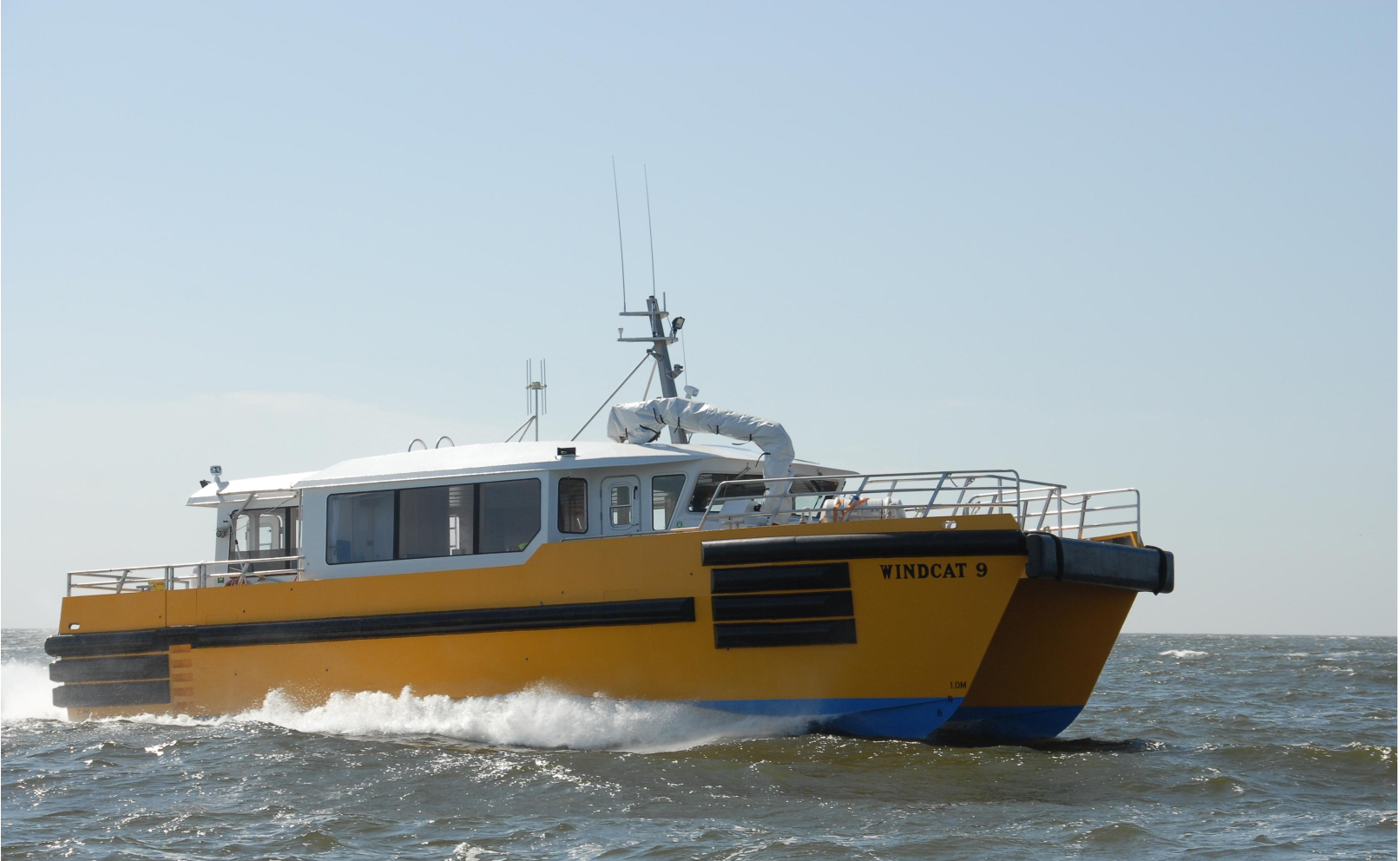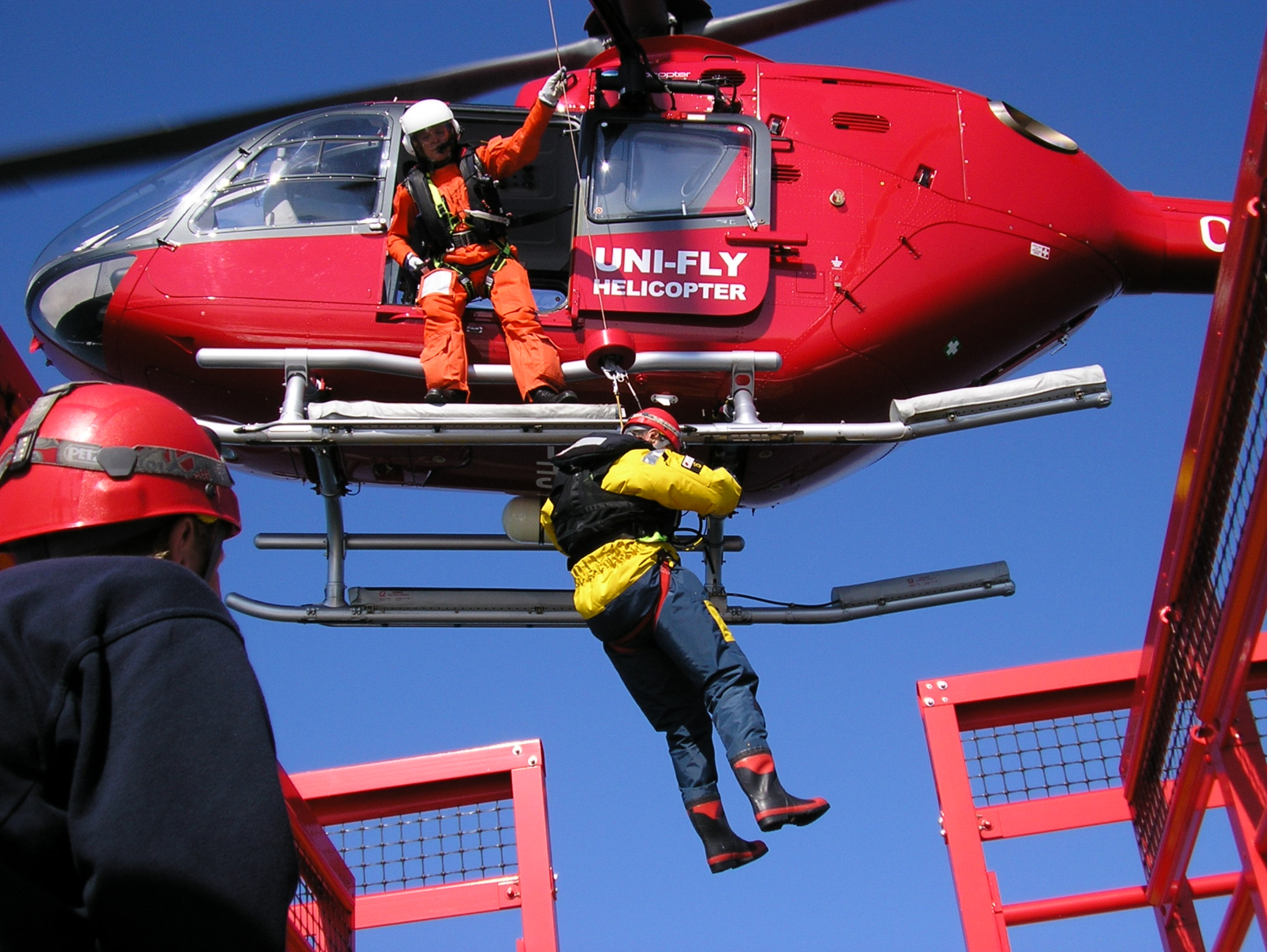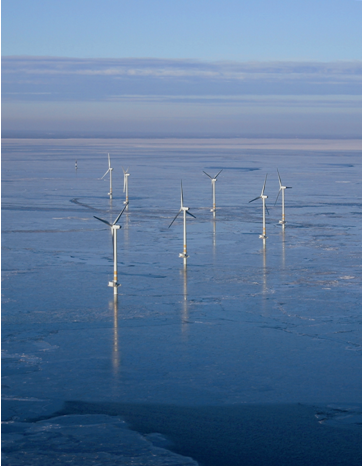MAIN PUBLICATION :
| Home � TECHNOLOGY � Offshore � Wind turbine technology for offshore locations |

|
Wind Turbine Technology for Offshore Locations
Availability, Reliability and Access
High availability is crucial for the economics of any wind farm. This depends primarily on high system reliability and adequate maintenance capability, with both being achieved within economic constraints on capital and operational costs.
Key issues to be addressed for good economics of an offshore wind farm are:
- Minimisation of maintenance requirements; and
- Maximisation of access feasibility.
The dilemma for the designer is how best to trade the cost of minimising maintenance by increasing reliability - often at added cost in redundant systems or greater design margins - against the cost systems for facilitating and increasing maintenance capability. Previous studies within the EU research programmes, such as OptiOWECS, have considered a range of strategies from zero maintenance (abandonment of faulty offshore turbines) to highly facilitated maintenance.
Access is critical as, in spite of the direct cost of component or system replacement in the difficult offshore conditions, lost production is often the greatest cost penalty of a wind turbine fault. For that reason much attention is given to access. Related to the means of access is the feasibility of various types of maintenance activities and the need or not for support systems (cranes and so on) and other provisions in the wind turbine nacelle systems.
High availability is crucial for the economics of any wind farm. This depends primarily on high system reliability and adequate maintenance capability, with both being achieved within economic constraints on capital and operational costs.
Key issues to be addressed for good economics of an offshore wind farm are:
- Minimisation of maintenance requirements; and
- Maximisation of access feasibility.
The dilemma for the designer is how best to trade the cost of minimising maintenance by increasing reliability - often at added cost in redundant systems or greater design margins - against the cost systems for facilitating and increasing maintenance capability. Previous studies within the EU research programmes, such as OptiOWECS, have considered a range of strategies from zero maintenance (abandonment of faulty offshore turbines) to highly facilitated maintenance.
Access is critical as, in spite of the direct cost of component or system replacement in the difficult offshore conditions, lost production is often the greatest cost penalty of a wind turbine fault. For that reason much attention is given to access. Related to the means of access is the feasibility of various types of maintenance activities and the need or not for support systems (cranes and so on) and other provisions in the wind turbine nacelle systems.
IMPACT ON NACELLE DESIGN
The impacts of maintenance strategy on nacelle design relate to:
- Provision for access to the nacelle;
- Systems in the nacelle for handling components; and
- The strategic choice between whether the nacelle systems should be (a) designed for long life and reliability in an integrated design that is not particularly sympathetic to local maintenance and partial removal of sub-systems or (b) designed in a less cost-effective modular way for easy access to components.
LOCATION OF EQUIPMENT
Transformers may be located in the nacelle or inside the tower base. Transformer failures have occurred in offshore turbines, but it is not clear that there is any fundamental problem with location either in the nacelle or the tower base.
IMPORTANCE OF TOWER TOP MASS
The tower top mass is an important influence on foundation design. In order to achieve an acceptable natural frequency, greater tower top mass may require higher foundation stiffness, which could significantly affect the foundation cost for larger machines.
INTERNAL CRANES
One option is to have a heavy duty internal crane. Siemens and Vestas have adopted an alternative concept, which in general consists of a lighter internal winch that can raise a heavy duty crane brought in by a maintenance vessel. The heavy duty crane may then be hoisted by the winch and set on crane rails provided in the nacelle. Thus it may be used to lower major components to a low-level platform for removal by the maintenance vessel.
Critical and difficult decisions remain about which components should be maintained offshore in the nacelle, which can be accessed, handled and removed to shore for refurbishment or replacement, and when to draw a line on component maintenance capability and accept that certain levels of fault will require replacement of a whole nacelle.
MEANS OF ACCESS
The costs of turbine downtime are such that an effective access system offshore can be relatively expensive and still be justified.
Figure 5.3 Access Methodes
Source: Windcat Workboats, Unifly
Helicopter access to the nacelle top has been provided in some cases. The helicopter cannot land but can lower personnel. Although having a helipad that would allow a helicopter to land is a significantly different issue, the ability to land personnel only on the nacelle top of a wind turbine has very little impact on nacelle design. Although adopted for the Horns Rev offshore wind farm, helicopter access is probably too expensive as a routine method of transporting personnel to and from offshore wind turbines, assuming current project sizes and distance from shore. However, as projects grow in size and go further offshore, this will be a credible option.
ACCESS FREQUENCY
At Horns Rev, which is the first major offshore wind farm in the North Sea, a vast number of worker transfers have taken place since construction, and this is a concern for the health and safety of personnel. It is expected (and essential) that the required number of transfers for the establishment and commissioning of offshore wind plant will reduce as experience is gained.
ACCESS IMPEDIMENTS
In the Baltic Sea especially, extensive icing occasionally takes place in some winters. This changes the issues regarding access, which may be over the ice if it is frozen solid or may use icebreaking ships. Also, the ice in general is in motion and may be quite unstable. Lighthouses have been uprooted from their foundations and moved by pack ice. The wind turbine foundation design used by Bonus in the Middelgrunden offshore wind farm, situated in shallow water between Denmark and Sweden, provides for a section at water level with a bulbous shape. This assists in ice breaking and easing the flow of ice around the wind turbine, thereby reducing loads that would tend to move the whole foundation.
Figure 5.4 Utgrunden Offshore Wind Farm - Sweden
Source: Vattenfall
In the European sites of the North Sea, the support structure design conditions are more likely to relate to waves than ice, and early experience of offshore wind has shown clearly that access to a wind turbine base by boat is challenging in waves of around 1m height or more.
Currently most standard boat transfers cannot – and should not – be performed in sea states where the significant wave height is greater than 1.5m and wind conditions are in excess of 12 m/s. This sea state constraint is generally not an onerous parameter for wind farms located in the Baltic region. However, in more exposed locations, such as in UK and Irish waters, the average number of days where the wave height is greater than 1.5 m is considerably greater.
FEASIBILITY OF ACCESS
Operating in concert with the wave height restrictions are restrictions from the water depth, swell and underwater currents. As an example, UK wind farms are generally sited on shallow sandbanks, which offer advantages in easier installation methods, scaled reductions in foundation mass requirements and in the tendency of shallow sandbanks to be located in areas away from shipping channels. However, shallow waters, particularly at sandbank locations where the seabed topography can be severe, amplify the local wave height and can significantly change the wave form characteristics. Generally speaking, where a turbine in a wind farm is located in the shallowest water, this turbine will present the most access problems.
Wave data that is representative of UK offshore wind farm sites shows that access using a standard boat and ladder principle (significant wave heights up to 1.5m) is generally possible for approximately 80 per cent of the available time. However this accessibility rate is too low for good overall wind farm availability. In winter, accessibility is typically worst when there is the greatest likelihood of turbine failures; yet at these times there are higher winds and hence potentially higher levels of production loss. Accessibility can be improved to above 90 per cent if access is made possible in significant wave heights between 2.0 and 2.5m. Providing access in yet more extreme conditions is probably too challenging considering cost, technical difficulty and safety. A safety limit on sea conditions has to be set and rigidly adhered to by the wind farm operator. This implies that 100 per cent accessibility to offshore wind plant will not be achievable and 90 per cent accessibility seems a reasonable target. Improvements in availability thereafter must be achieved through improved system reliability.
Safe personnel access is currently one of the most important topics under discussion in offshore wind energy. For example, the British Wind Energy Association, in consultation with the UK Health and Safety Executive, has produced guidelines for the wind energy industry (BWEA, 2008). These guidelines were issued as general directions for organisations operating or considering operating wind farms.
ACCESS TECHNOLOGY DEVELOPMENT
There may be much benefit to be gained from the general knowledge of offshore industries that are already developed, especially the oil and gas industry. However, there are major differences between an offshore wind farm and, for example, a large oil rig.
The principal issues are:
- There are multiple smaller installations in a wind farm and no permanent (shift based) manning, nor the infrastructure that would necessarily justify helicopter use; and
- Cost of energy rules wind technology, whereas maintenance of production is much more important than access costs for oil and gas.
Thus, although the basis of solutions exists in established technology, it is not the case that the existing offshore industry already possesses off-the-shelf solutions for wind farm construction and maintenance. This is evident in the attention being given to improved systems for access, including the development of special craft.
CONCLUSIONS REGARDING ACCESS ISSUES
There appears to be a clear consensus on offshore wind turbine access emerging for current generation sites. Purpose-built aluminium catamaran workboats are currently in use for the several wind farms. Catamarans generally provide safe access in sea conditions with a maximum significant wave height up to 1.5m. On occasion this figure has been exceeded by skippers experienced in offshore wind transfers on a particular site.
In most current projects the standard boat and ladder access principle is practicable for approximately 50-80 per cent of the available service time, depending on the site. However when this accessibility figure is considered in concert with the overall wind farm availability equation, there is scope for improvement. The main reason for improvement is that winter accessibility rates are typically much worse than for the summer period. This is compounded with a higher likelihood of turbine failures in winter and also higher winds, hence higher levels of production loss.
With some effort this accessibility figure can be improved markedly - that is to say, where access can be made possible in significant wave heights of between 1.5m and 2.0m. Providing access above 2.0m becomes an economically and technically challenging decision. It is likely that significant expenditure and technical resources would be necessary to gain modest incremental improvements in access rates above the 2.5m significant wave threshold.
Projects soon to come online and those planned for the next decade may have a new driver distance to shore. For these, transit times by vessel become impractical for day-workers, and in these cases solutions using helicopters or offshore accommodation platforms (or vessels) will come to the fore.
| Lightning risk offshore >> |
| Acknowledgements | Sitemap | Partners | Disclaimer | Contact | ||
|
coordinated by  |
supported by  |
The sole responsibility for the content of this webpage lies with the authors. It does not necessarily reflect the opinion of the European Communities. The European Commission is not responsible for any use that maybe made of the information contained therein. |



